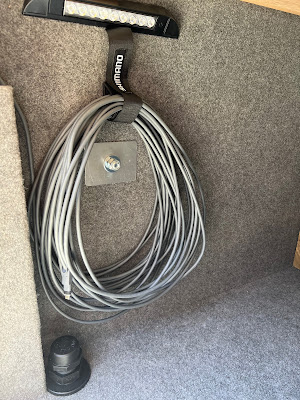While we are pleased with our Bushtracker, the following item should have been included during the build of the van. We have a compressor fridge mounted on the van's rear wall, and a hatch can be opened to help with ventilation around the compressor while camping. It's quite a large hatch, and some fly screen is glued to the timber frame at the bottom of the fridge to prevent insects from entering the van, but there was nothing in place to stop anything that crawls or flies from entering the fridge cavity. Once again, with a friend's help, I purchased a thin aluminium sheet that can be easily bent to fit neatly inside the fridge cavity. Best of all, it is fastened with five self-tappers, making removal simple.





















